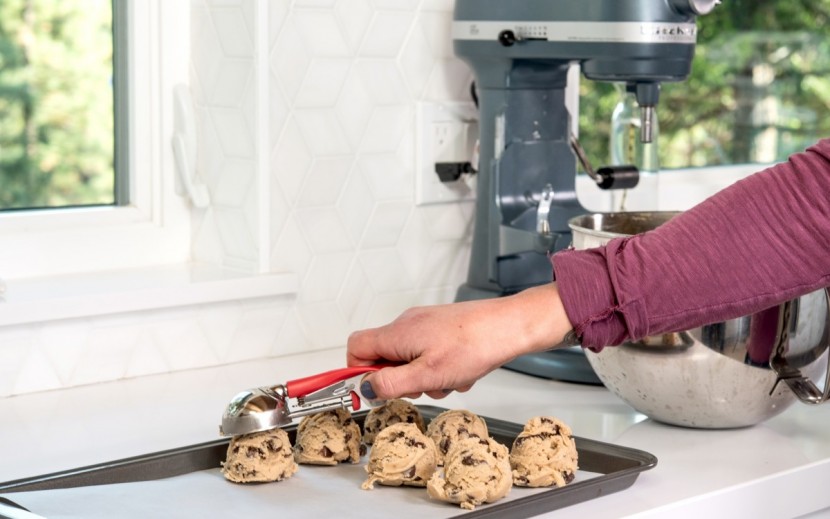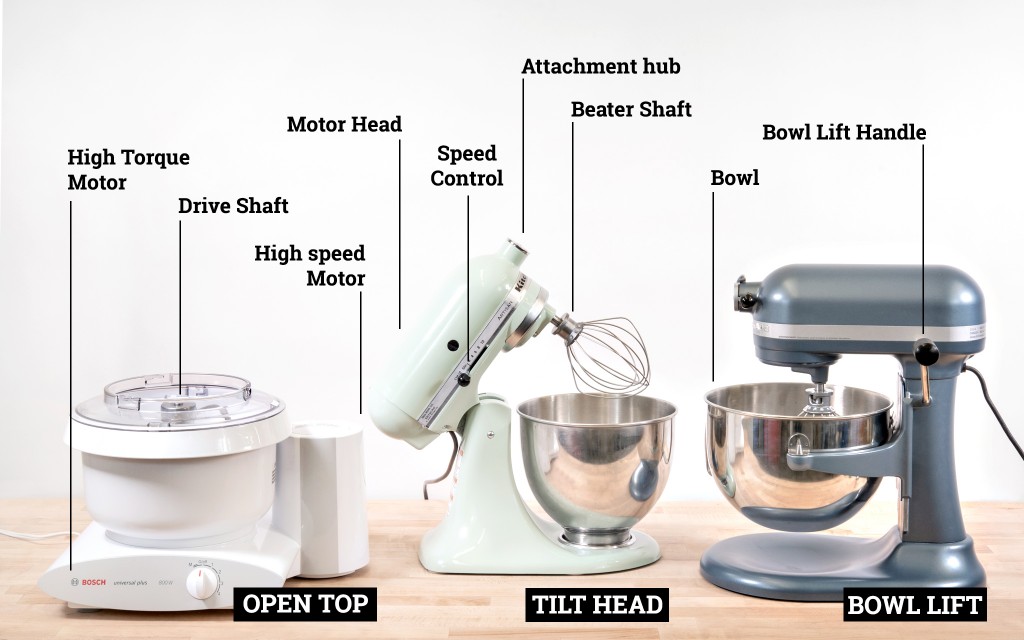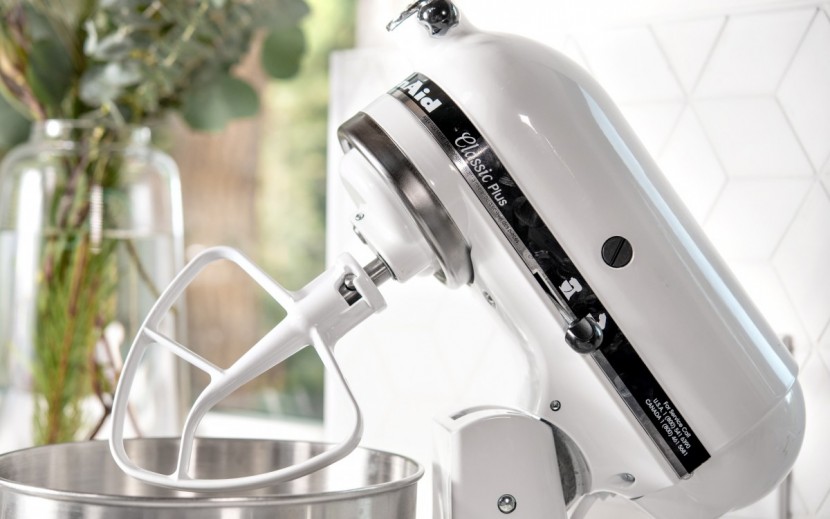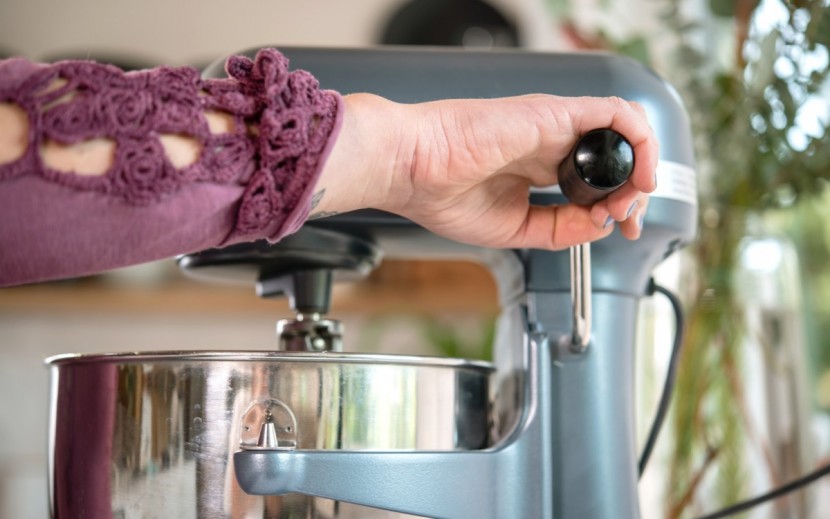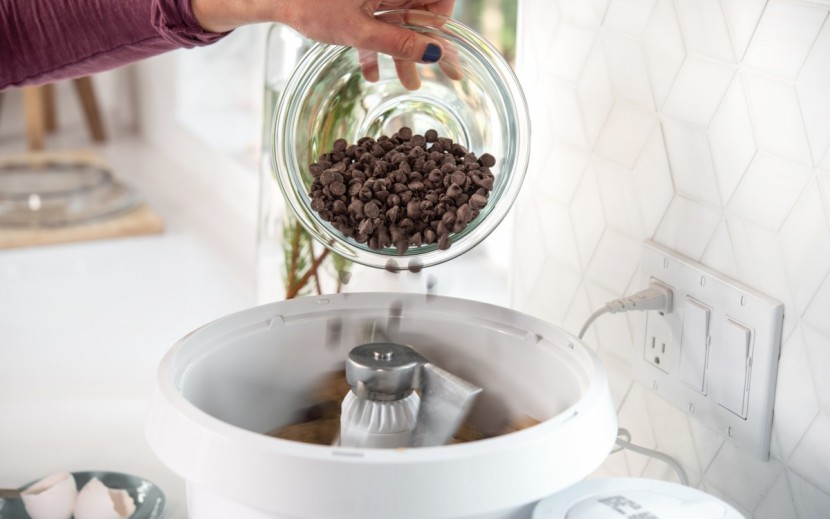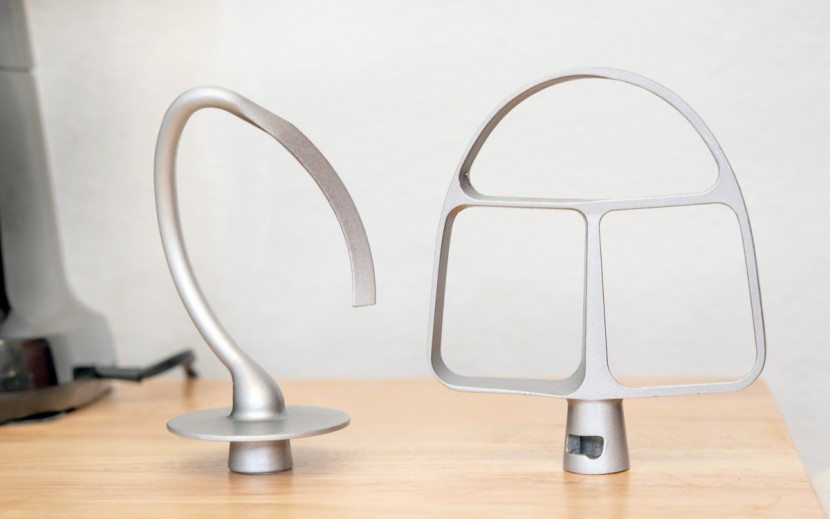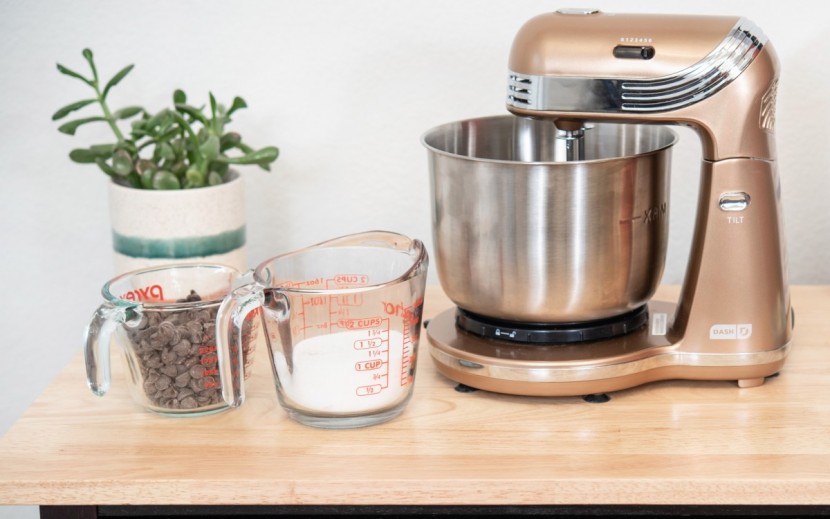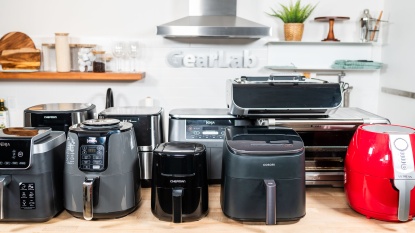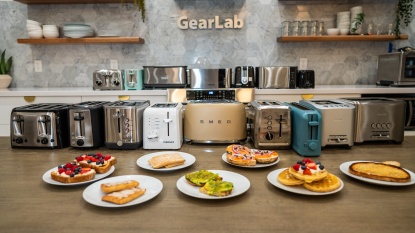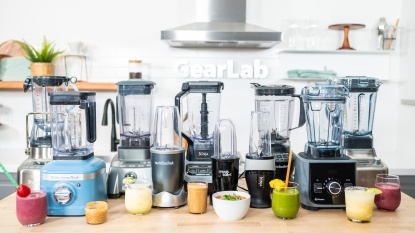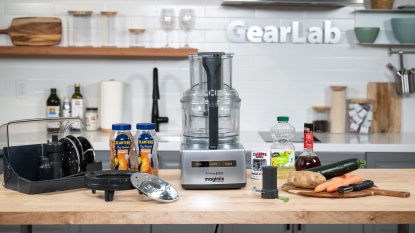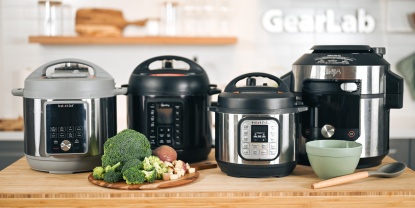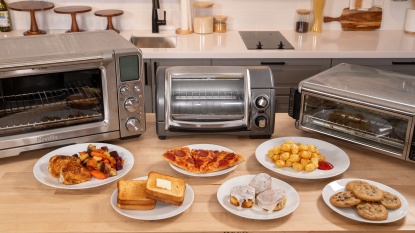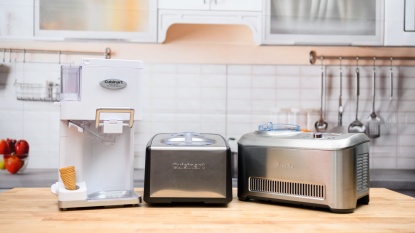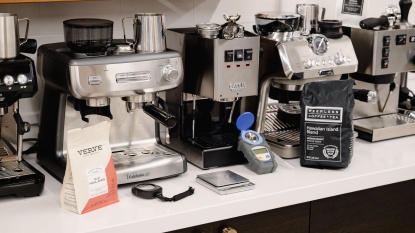Are you thinking about buying a stand mixer to stir a little yeast into a flat kitchen experience? If so, you've probably noticed that many stand mixers are available on the market; however, they perform in different ways and vary significantly in price. Take a deep breath and imagine the smell of fresh cinnamon rolls — yum. The following is a straightforward buyer's guide produced by professionals who have used all of the leading models in various applications. Between this article and the rigorous testing each contender endures in our stand mixer review, you should have the insider details to be well equipped to select the perfect stand mixer for your needs and budget. It will be a piece of cake.
Step 1: Do You Really Need a Stand Mixer?
The following are some practical considerations you'll want to consider before investing in a stand mixer. After all, they are expensive, bulky machines that will be a bother — rather than a boon — if unused.
You'll often hear that frequency of use is a determining factor in establishing a need for a stand mixer. Some go so far as to say that if you're not using your mixer at least once a week, then you don't need one and should just stick to a hand mixer. We disagree. Certainly, if you buy one of these machines, you'll want to put it to use. However, frequency isn't the only factor. We encourage you to take volume into account as well. So, suppose you host an annual holiday cookie baking extravaganza or something along those lines. In that case, we think that infrequent, high-volume use warrants having one of these workhorses in your arsenal of kitchen appliances.
While volume and frequency are primary considerations, the technical difficulty of producing the foods that interest you is part of the equation as well. Baking, in particular, can be challenging as it requires specialized knowledge, skills, and cooking tools.
But, if you're interested in baking, and you're looking at stand mixers, you've likely made a few cakes or some bread, and you recognize the benefit that a mixer can provide. Technical challenges aside, baking is time-consuming and physically demanding, which are two problems a stand mixer mitigates.
Another way to look at whether you're current (or future) activities warrant the use of a mixer is multi-tasking. If you host regular dinner parties and you're trying to do several tasks at once, a mixer is a fantastic assistant as it never complains, never gets tired, and always shows up on time. So, whether you're mixing dough for tortillas, whipping up dressing for your coleslaw, or making mousse for dessert, a mixer will free you up to do something else while it does the manual labor.
Step 2: How Much is a Stand Mixer Worth to You?
At some point, most folks have to ask themselves, is this product worth the money? However, this isn't whether or not the products are of good quality and priced appropriately. Instead, it's a question of whether the problems solved and the satisfaction derived by using the product outweigh the dent in one's pocketbook. Stand mixers run the gamut in prices from less than fifty to more than six-hundred and fifty bucks. With few exceptions, the more you want to do with your stand mixer, the more you'll have to pay. In general, as the volume of the bowl increases, so does the price. As you consider how much a stand mixer is worth to you, think about the scenarios posed in Step 1. In the following section, we discuss the styles and sizes of mixers. The associated cost and what you're getting for your money will become more apparent with that understanding.
Step 3: Know Your Options - Types and Sizes of Stand Mixers
If you've been cruising the internet reading about stand mixers, you might have gotten the impression that these machines are primarily for bakers. But, that's not the case. For reasons we'll go into shortly, people often talk about baking because of dough's demands on these machines. That said, mixers offer benefits that range from whipping dips and salad dressings for nutritious salads, to mixing meatloaf, to mashing potatoes, to name just a few. So, if baking isn't at the top of your list, that's fine.
As said, mixing and kneading dough is the most demanding task these machines can tackle. The dough density significantly strains the motor, gears, and componentry driving the dough hook or paddle. The motor has to be more powerful, and the gears and components are more durable, especially with larger bowl sizes. That is why the mixers that can handle kneading dough regularly are the most expensive. With this understanding, let's look at stand mixers' different types and styles.
Most mixers come with a dough hook, a wire whip (or two), and a flat beater. However, how these machines use these attachments can differ significantly. There are three main methods to accomplish this end. The first and most common is planetary mixing, wherein the mixer attachment spins on its axis in one direction while revolving around the bowl in the opposite. It's very effective.
The next is the triple whip —- a method used by the open-top mixers with a central drive shaft. The mixing action is triplicated when the central shaft is mounted with twin-wire whips that spin on their axes while rotating around the bowl. For some tasks, this is an effective mixing method but is much more limited than the planetary method.
Finally, there is the beater mixing method. You may recall the handheld mixers that utilize twin, four-wire beaters mounted on shafts that spin in opposition to one another. For many, licking batter from these was a childhood treat, and as Bart Simpson found out the hard way, you'll want to detach the beaters from the machine before indulging. Beater mixers are a stand-mounted version of the classic handheld kitchen tool.
Tilt-head
Regardless of how the mixing occurs, the tilt-head is the most common body design. As the name implies, the “head” of the machine housing the motor tilts back on the neck, lifting the mixer attachment(s) from the bowl. We have heard some complaints that when you want to add ingredients to the bowl, you have to stop the mixing and tilt the head back to gain access. While there is some truth to this when adding large quantities of dry ingredients, we have found that slowing the machine down does much to mitigate this problem.
Bowl-lift
The bowl-lift is the gold standard for mixers. These machines are modeled on the professional, high-volume mixers found in many restaurant kitchens. Instead of dropping the mixer head down into the bowl as with the tilt-head, the bowl is raised into contact with the mixer attachment with a crank. Like the tilt-head, the motor is housed in the head of the machine, and as a result, bowl-lift mixers also obstruct access to the bowl when it is in operation. If you see a mixer is a bowl-lift, you can bet it means business. This style offers a great deal of adjustability and thus manipulation of the mixing process. For example, one can heat or cool the bowl from below while mixing.
Open-Top
The open-top machines stand apart from the rest of the stand mixers on the market. Not only do they look different, but their operation is also unique. These machines house the motor in the machine's base, and, in one case with the Bosch Universal Plus Kitchen Machine, a secondary motor is siloed on the side of the base for aftermarket attachments. Some have fixed bowls in which the mixing is done, while others rotate the mixing bowl and have a fixed roller arm. Regardless of the mixing method, these mixers have an open-top that seemingly solves the problem of adding ingredients while the mixer is running. However, we found that the central driveshaft and roller arm models partially obstruct the bowl. This issue is increased if a splash guard is in place. That said, the open-top mixers certainly provide the best line of sight, if not physical access, to the bowl while actively mixing. In general, the open-top mixers are among the largest volume and, by necessity, the most powerful mixers.
Step 4: Attachments, Accessories and Color Options
Up to this point, we have discussed the practical reasons to buy a stand mixer, what a stand mixer's benefits are worth, and, given the cost, what types of stand mixers fulfill these needs. If you've read this far, then you've probably decided that there is a stand mixer in your future. Once you've decided on volume and general design, it all comes down to the details of aftermarket attachments, accessories, and color.
Let's talk attachments first. With few exceptions, these machines have accessory hubs that allow the user to connect an attachment — such as a pasta roller or blender — to the motor. This feature makes an already versatile machine almost unlimited in its capabilities. We do not advise buying a mixer for its attachments alone. However, it is a fantastic bonus if the mixer fits your needs and budget and has attachments you'd like to invest in. That said, the models that have the motor in the head of the unit (opposed to the base) are more simplistic and straightforward to use as they require no reconfiguration of the machine and fewer additional parts.
Aside from the plethora of attachments, the other accessories are limited to various bowl options and additional mixing attachments. These bowls can be plastic, metal, glass, or ceramic, depending on the manufacturer. Additionally, they can be pitcher style or designed to be better suited to whisking.
At the bottom of the list are the color options. Like accessories and attachments, color options should be a low-rank deciding factor. However, consider the machine's color if everything else is lining up. Generally speaking, one could match a mixer to any kitchen decor. However, as the higher-end mixers should be considered a lifetime purchase, it might be prudent to think in terms of classic colors.
Conclusion
We've covered a lot of ground in this buying advice article. To recap, think about how you plan to use a stand mixer in your kitchen. Will you use it frequently to ease your workload or holiday cookie bake-offs? Are you trying to up your game with some more complex recipes, or do you need a helping hand when preparing for dinner parties? Next, think about how much the conveniences you seek are worth. Stand mixers are expensive, but when put to work, worth the money. Finally, know your options. There are many mixer styles and sizes, and they all have a preferred function. When shopping for stand mixers, the last concern should be the accessories and the color. Given this advice, we hope that you have found this article helpful and informative. For information on specific models, please check out our comprehensive stand mixer review.



